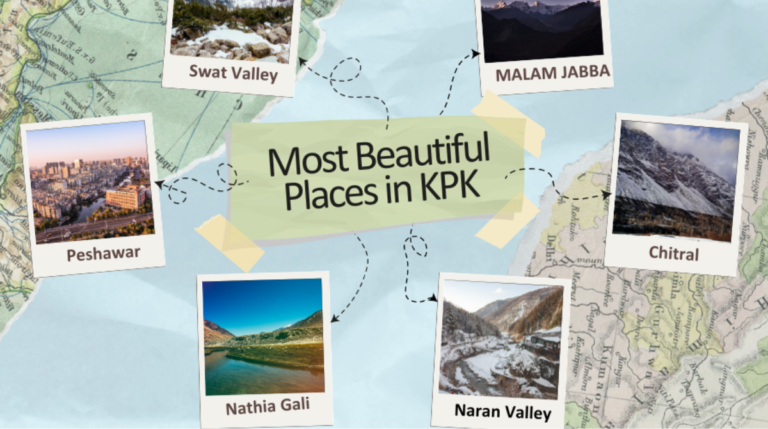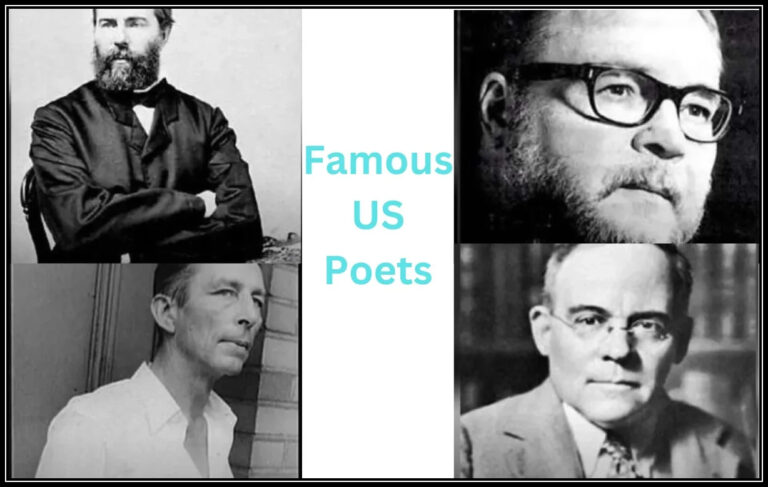Which Are the Top 10 Historical Places in Pakistan in 2024?
Pakistan is a blessed land, offering a treasure trove of natural beauty and resources. With the blend of rich cultural tapestry and breathtaking sceneries, the country is home to one of the oldest civilizations in the world. From majestic mountains to sprawling deserts, the countryland is a paradise for those who like exploring old and historical places. If you’re keen to know about Pakistan’s most historical places then you’ve come to the right place. In this article, we will explore the top historical places of Pakistan, which should not be missed especially if you’ve a knack for history.
List of the Top 10 Most Historical Places in Pakistan
Here is the list of most historical sites in Pakistan.
- Mohenjo Daro
- Lahore Fort
- Badshahi Mosque
- Rohtas Fort
- Hiran Minar
- Shalimar Garden
- Katas Raj Temples
- Wazir Khan Mosque
- Pakistan Monument
- Tomb of Jahangir
1. Mohenjo Daro
When visiting most historical places of Pakistan, Mohenjo Daro won’t be neglected. The name “Mohenjo Daro” signifies “The Mound of the Dead.” This is a must-visit site in Pakistan, which was unknown over the 3700 years. Located in Larkana District of Sindh, Pakistan, the site was built in 2500 BCE. It was not rediscovered until the 1920s. The presence of Mohenjo Daro was the settlement of the ancient Indus Valley Civilization. This ancient site is spread over an area of 300 hectares, representing beautifully how the cities and civilizations started in South Asia.
The UNESCO program declared Mohenjo Daro as a UNESCO World Heritage Site in 1980. The first World Heritage Site in Asia was cleverly planned with neat streets and an effective system for draining water. Archaeologists found the old structure inside it like the assembly halls and homes. People who lived in Mohenjo Daro were like secret code writers, as they wrote on seals but we won’t figure out what it means today. Step into Pakistan’s famous historical site and let the pieces of the puzzle find their way to rediscover the lost city. Visit the Mohenjo Daro site, and discover how the ancient folks lived and what their community was like. This historical site also resembles Harappa, another ancient city of that time.
Read Also: Which Are the Cold Places in Pakistan?
2. Lahore Fort
Lahore Fort is one of the most historical sites of Pakistan that elaborates on the country’s old and important times. Located in the walled city of Lahore, it is opposite the second largest mosque in Pakistan, Badshahi Mosque. Going back to the 11th century, the structure of Lahore Fort was completely different, and changed a lot in the 17th century during the ruling period of Emperor Akbar. This Fort is known for its entirely rebuilt structure when the Mughal Empire was at the height of its splendor and opulence. The great Emperor Akbar bestowed the fort with a syncretic architectural style, featuring both Islamic and Hindu motifs. Whereas, Shah Jahan made changes by placing luxurious marble with inland Persian floral designs. The Alamgiri Gate was constructed by the last of the Mughal emperors, Aurangzeb. This Fort’s grand and iconic gate faces the world’s most famous, Badshahi Mosque. After the era of the Mughal Empire, the founder of the Sikh Empire “Ranjit Singh” also brought up several additions to the fort. The fort was inscribed as a UNESCO World Heritage Site in 1981 for its “outstanding repertoire” of Mughal monuments.
3. Badshahi Mosque
Badshahi Mosque is an incredibly old and magnificent building, located in the walled city of Lahore, Pakistan. This beautiful mosque was built in 1671, during the reign of Mughal Emperor, Aurangzeb. After the Faisal Mosque, it has earned its position as Pakistan’s second-largest mosque. Badshahi Mosque is one of the sacred sites of Muslim culture. Constructed with red stones and white marble, the Mosque is super big where thousands of people can pray at the same time.
The walls of Badshahi Mosque are impressively painted, while big domes and tall towers make it look more eye-catching. The mosque’s interior is decorated with Kashan-style work. Hundreds of people come and visit this site, famous for its unique combination of cultural and religious heritage of the country. The building symbolizes how the Mughals liked to décor their prayer places. Look at the Mosque from a distance, and you will find it in the Lahore skyline.
4. Rohtas Fort
Rohtas Fort, also known as Qila Rohtas, is one the largest forts in the subcontinent which is located near the Jhelum. Built in the 16th century by Sher Shah Suri, it has earned its position among Pakistan’s most historical places. The fort was constructed to block the return of Muhal Emperor Hamayun to India.
This site was inscribed as a UNESCO World Heritage Site in 1997. Rohtas Fort features extensive walls with 68 bastion towers and 12 gates. This large fort spreads over a land area of 60 hectares. Take a step towards Rohtas Fort, and explore its old towers and unique architecture like you have never before. Whether it’s the Haveli of Man Singh, Sohail Gate, or the Baoli, each section of the fort tells a unique story of the region’s turbulent past. If you’re interested in unveiling Pakistan’s rich cultural heritage, then Rohtas Fort is the perfect place for you. This ancient place is not only famous for its historical significance but also as a great destination for those who want to escape from urban life.
5. Hiran Minar
Hiran Minar is one of Pakistan’s historical places, situated near the city of Sheikhupura. It was constructed in the 17th century in honor of an Antelope. The Father of Shah Jahan, Mughal Emperor Jahangir had a pet antelope, who brought animals for hunting and was known as Mansaraj. Hiran Minar is also famous as “The Deer Tower.”
A minaret of about 110 meters tall, represents the antelope in this hunting reserve. The massive pool and pavilion add beauty and grace to this site. Likewise, Emperor Hamayun made Sher Mandal, this pavilion was also built with the same architectural design. An impressively designed water system automatically refills the pool. The antelope’s grave makes it a more significant place for visitors.
Read Also: 10 Most Visited Countries in Asia
6. Shalimar Garden
With a unique blend of natural beauty and old heritage, Shalimar Gardens come out as one of the most famous historical sites in Pakistan. Near the Lahore Fort, Shalimar Gardens represents how the Emperors liked amazing things. In 1641, this historical place was constructed during the reign of the Mughal Emperor, known for its artistic and aesthetic builds, Shah Jahan. While spreading over 16 hectares and divided into three terraces, each terrace has been given poetic names such as Bestower of Pleasure, Bestower of Goodness, and Bestower of Life, respectively.
This ancient building was constructed in the 17th century and is still mesmerizing even after three centuries. Shalimar Gardens is filled with landscaped lawns and captivating fountains, giving a serene retreat for visitors. Initially, the Royal Mughal family used to entertain their guests here but later it became one of the World Heritage Sites. Shalimar Gardens have different levels and eye-captivating water channels, symbolizing a unique blend of beauty and usefulness. The beautiful water pool with marble floor reflects light through its crystal clear water. There are almost 410 fountains, which pours water into these pleasing water pools. Visit Shalimar Gardens and discover the great masterpiece from the time of the brilliant Mughal civilization.
7. Katas Raj Temples
Katas Raj Temple is also known as a Hindu Temple, surrounded by a pool. People of different religions used to live together in the Bare Sagheer. After the independence of Pakistan, this Muslim country still gives complete freedom to people of different religions. This old building in Pakistan is a remnant of the Hindu religion. Located at an altitude of 2000 feet near Kallar Kahar, Katas Raj is a set of temples that are connected by pathways, surrounding a pond named “Katas.” The history of Hinduism is connected to this pond, and thus, considered a sacred pond in the Hindu religion. Shivling inside the temple is said to be created by the Hindu deity Krishna, whereas, the pond is made by the tears of Shiva.
8. Wazir Khan Mosque
Wazir Khan Mosque is one of the Mughal-era mosques that has earned its position among Pakistan’s most historical places. This mosque was renowned for its intricate faience tile work, named kasha-kari. Wazir Khan Mosque was built during the reign of Shah Jahan, the great artistic ruler of the Mughal Empire. The mosque’s construction orders were given to a chief physician of the Mughal Court, known as Wazir Khan. Its construction was started in 1634 and completed in 1641. You can find seven years of hard work in its design and architectural style. This ancient place was named after Viceroy’s name and became popular as Wazir Khan Mosque. Since 2009, this historical site has been under extensive restoration under the direction of the Agha Khan Trust for Culture and Government of Punjab.
9. Pakistan Monument
Pakistan Monument is situated at Hilly place and offers a sense of the struggle that the country went through for its independence. The building was designed on the theme of signifying the strength, unity, and dedication of the Pakistanis into an icon, representing an independent and free nation. When entering the monument, you’ll find a museum where giant pictures of Quaid e Azam, the founder of Pakistan, and other important events are displayed, providing information for tourists. This historical site was constructed to symbolize the unity of people, who sacrificed their today for a better tomorrow.
10. Tomb of Jahangir
The tomb of Jahangir commemorates the fourth Mughal ruler’s legacy. This famous historical site is located in Shahdara Bagh, near the city of Lahore, Pakistan. The construction was started in 1627 and completed in 1637, took ten years for completion. This 17th-century mausoleum was built for Jahangir’s son Shah Jahan. Tomb of Jahangir is renowned for its interiors which are extensively embellished with frescoes and marble, and the exterior is decorated with pietra dura. This site is a striking testament to Mughal architecture and history and is popular among tourists as a great destination to uncover the past.
Read Also: Which Are the Most Beautiful Cities in Pakistan?
Conclusion
Historical sites represent the old civilizations. These ancient places might not look as good as the new building but still stood firm in the stormy winds, filled with the memories of history. From the Mohenjo Daro to Badshahi Mosque, Hiran Minar, Shalimar Garden, and Tomb of Jahangir, each offers an immersive experience in cultural heritage. Take your family and explore the country’s rich spirituality and history with your loved ones. These historical places will surely leave a lasting impression on you.
FAQ’s
What is the most famous historical place in Pakistan?
Badshahi Mosque and Lahore Fort are the two most famous historical places in Pakistan. Built In the Mughal era, Badshahi Mosque is one of the largest mosques worldwide, known for its impressive Mughal architecture.
Which cities of Pakistan are rich in history?
Following are the cities of Pakistan, which are rich in history.
- Lahore
- Rawalpindi
- Multan
- Taxila
Do you recognize important historical and cultural places in Pakistan?
UNESCO program has declared the six sites in Pakistan as World Heritage sites which include:
- Mohenjo Daro
- Takht-i-Bahi and Sahr-i-Bahlol
- Shahi Fort and Shalimar Gardens
- The Historical Monuments at Makli
- Rohtas Fort
What Is Special in Pakistan?
Pakistan is a land of breathtaking mountains. This country has the second highest mountain K2, and three highest mountain ranges such as Hindu Kush, Karakoram, and Himalayas.
What Is the Strategic Importance of Pakistan?
Pakistan is situated in the crossroads of Asia with China as a neighbor in the north, Iran and Afghanistan in the west, and India in the east.

I’m Sophia Jones, an adventurer at heart from New York City, USA. I live for travel and exploration, always eager to discover new places, meet fascinating people, and try out diverse cuisines. Over the past few years, I’ve traveled to numerous countries, immersing myself in different cultures and creating unforgettable memories.






